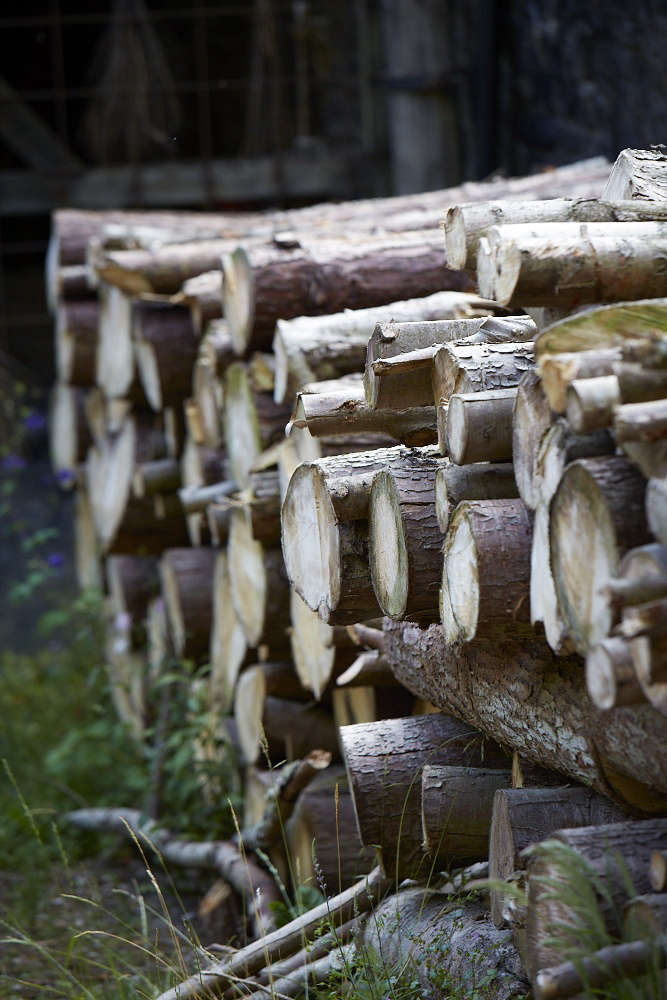In publishing, books on firewood and building fires have been huge hits the past few years, including Lars Mytting’s Norwegian Wood, Daniel Hume’s The Art of Fire, and Sally Coulthard’s The Little Book of Building Fires.
For anyone with a wood-burning stove or open hearth the woodpile is a source of endless satisfaction in the winter months. Not only is it aesthetically pleasing (if stacked well), it’s also a primal reassurance—no matter what, there will be the warmth of a blazing fire. But what’s the best way to stack and store this precious resource? Read on to find out.
Photography by Britt Willoughby Dyer except where noted.
How long does it take for green wood to dry?

Does all firewood dry at the same rate?

What is the best way to position a woodpile?

Angle your wood pile against prevailing winds, so that the drying breezes will blow through the stack and hit the length of the wood. An open shed that gives this ventilation but also protects the wood from the rain is also ideal. A metal roof will also help reduce moisture more quickly from the wood.
Building a woodpile: how do I start?

According to a Nordic saying, wood will dry well if there is space for a mouse to run through the whole woodpile. First, the pile should be raised slightly off the ground to prevent moisture coming up from below—the first pieces of wood can rest on pallets or poles to make sure there is ventilation beneath.
What is the best way to stack firewood?

Logs that are halved create the most stable piles and logs dry best when their sides are exposed to air flow. If you’re in a very wet area or if the log pile isn’t under cover, stack the logs with the bark on the uppermost side to add extra protection.
In Norwegian Wood, Lars Mytting describes how, in late 19th-century Maine, young women were advised to observe the wood piles of potential suitors as it revealed everything about a young man’s character.
Should you cover a woodpile?

Unless you are in a particularly humid area, wood can be left uncovered during spring and summer as the sun and wind will help to dry it out.
Where should you stack firewood?

What’s the best way to carry firewood indoors?

A sturdy log carrier made from strong canvas or sail cloth is the easiest way to carry a pile of logs and can simply be folded down and hung on a back door while not in use. For some of our favorites, see 10 Easy Pieces: Firewood Log Carriers.
What about racks or shelves to store firewood neatly?

Racks and shelves are useful for storing a day’s or even a week’s supply of firewood near a house. We’ve rounded up 10 of our favorites in 10 Easy Pieces: Firewood and Log Storage.
Where can I read more about how to store and care for firewood?

N.B.: For more armchair advice on the art of building a fire, see:

















Have a Question or Comment About This Post?
Join the conversation (0)